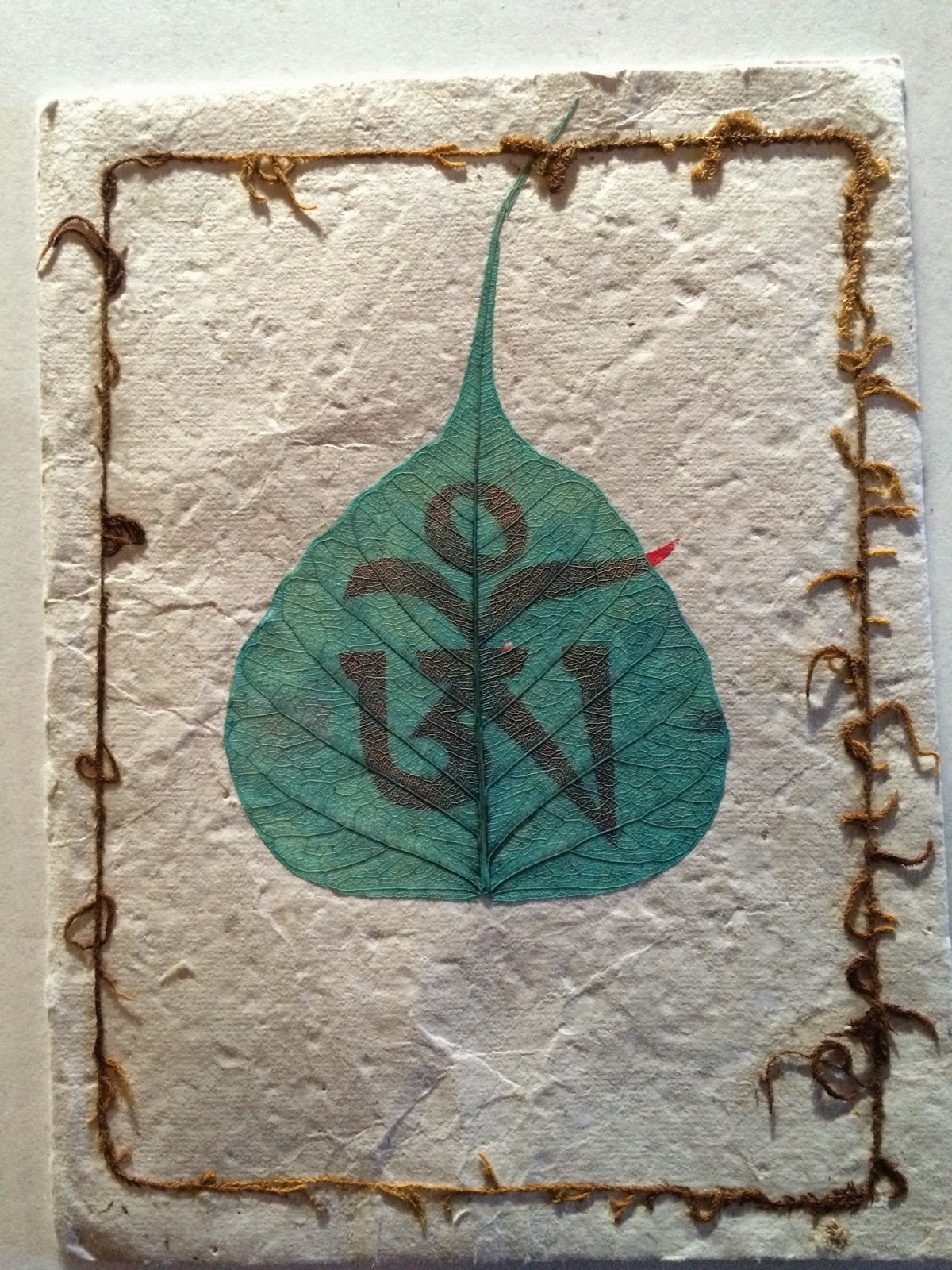"Om" in Tibetan Script with Bodhi Tree leaf from Bodhgaya
Mantra meditation is the bread and butter of Yoga. Through recitation of what are termed "bija" or seed syllables such as "Om" or "Hrim" (for Goddess followers), we can turn the mind to the deeper sources of Ultimate Being. "Om" recitation is central to Hindu, Buddhist and Jain meditation practice. But does mantra meditation also extend to the West in a version adapted to Western philosophy and religious prayer? Many have argued that the Jesus prayer: "Lord, Jesus Christ, have mercy on me, a sinner" (sounds less daunting and self-denigrating in Greek) is an adoption/independent innovation of Buddhist/Yoga mantra meditation, but I would search for a connection to Greek/Hellenistic/Roman philosophy before tagging the correspondence to Buddhist-Christian interactions.
What is prototypical about mantra meditation is its use of sound to arouse and shift consciousness into a meditational state of mind. The Neoplatonists, like Plotinus, actually sought for ideas from India to fertilize their philosophical ideas and contemplative practices. The Indian emperor Ashoka in his 250 BCE edicts used the word eusebeia as a Greek translation for the Buddhist, Jain and Hindu concept of "Dharma". Eusebeia means good reverence or good awesomeness or or good spiritual worship and, in the Buddhist context, includes right moral action.
If reverence for the Divine includes the production of sound syllables then we are in good company. John Coltrane is his Jazz paean to Nature, "A Love Supreme", also repeats the core melody "A Love Supreme" with riffs by solo horns and woodwinds. Iamblichus, the Neoplatonist philosopher, also heard music as a symbol of divine harmony. He asserts, "Music is moving and sensuous, and that the sound of pipes causes or heals disordered passions...sounds and tunes are properly consecrated to each of the gods, and kinship is properly assigned to them in accord with their proper orders and powers, the motions of the universe itself and the harmonious sounds rushing from its motion." (Iamblichus, On the Mysteries, Emma Clarke, John Dillon, and Jackson Hershbell, trans., (Society for Biblical Literature, Atlanta, Ga, 2003, 118-119). So, according to Iamblichus, "Hrim" connects us to the Goddess, "Om" to the ultimate ground of Being, "Brahman" and the Jesus Prayer to Christ.
Music and mantra meditation are then quick avenues to cosmic harmony.



